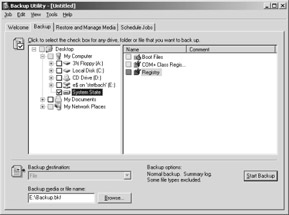Chapter 6: Registry
Overview
This chapter focuses on the registry as the central point for system configuration. We will, of course, examine in detail those registry topics that are relevant to Terminal Services. This chapter includes the following:
-
An introduction to the registry and its particular significance for terminal servers
-
An in-depth excursion into the specific registry settings for terminal servers
-
Specifics on the special mode for installing applications, which often modifies the registry database
-
Information on how and when to use compatibility flags in the registry
The registry is an essential configuration instance for Microsoft Windows Server 2003. Under Microsoft Windows 2000, the system did not allow the registry to grow larger than 376 megabytes (MB). This was, of course, a major issue for large terminal servers with many user sessions and an equal number of user profiles. In Windows Server 2003, the registry is managed as a file within the main memory ( memory-mapped file ), rendering the former size limitation invalid. The registry s system-specific hive alone can now handle up to 200 MB or one-quarter of the available physical memory ”whichever value is smaller. In Windows 2000, the limit for this hive was 12 MB.
| Important | To directly change the values in the registry as described in this chapter always harbors a certain amount of risk. You need to take the utmost care in performing this task. It is, therefore, inadvisable to modify the registry of a production system directly. You should always test registry settings on a test system before you implement the results on a production system (using scripts or Group Policies).  Figure 6-1: Saving the current system status using the backup program. |
EAN: 2147483647
Pages: 119